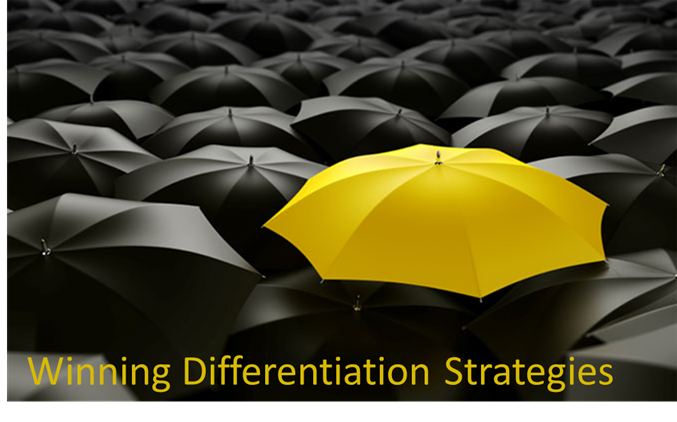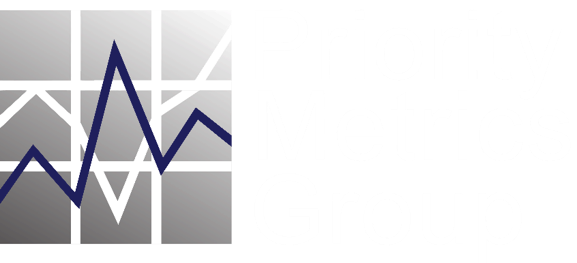
Winning B2B Competitive Differentiation Strategies
In a previous blog, we introduced 6 ways to differentiate in B2B markets. Now let’s look at some survey data which will help to identify winning competitive differentiation strategies. Priority Metrics Group conducts customer surveys regularly for clients in a variety of B2B businesses. Over the years, we have compiled a database of survey results with data from hundreds of these studies, all using a 7-point scale so we can aggregate and compare results.
DIFFERENTIATION ATTRIBUTES
For the competitive differentiation analysis, we looked at the 30 studies of companies that consistently outperformed competition (i.e. had the highest overall average net score versus competition). An example of one of these 30 companies is shown below in Figure 1. One can see from the analysis that the company outperforms competition on the majority of attributes, and as a result their overall satisfaction and value ratings are ahead of competition (last 2 blue lines in the chart).
Figure 1
Competitive Position by Attribute

Based on customer ratings similar to the above example, these 30 businesses boasted the largest differential between their perceived performance and the performance customers identified as their best competitor. In other words, they are the most differentiated.
By weighting the net scores for each individual attribute by the importance to overall customer satisfaction, we focused on only those attributes with the largest competitive gap. The top 50 individual attributes that drove customer satisfaction across all 30 studies were then extracted and grouped by category. The groupings and number of associated attributes are shown in Figure 2 below.
Figure 2

As seen in the chart, customer service attributes dominated the final list by nearly two to one over all other categories combined. Interestingly, perceived value was the category that appeared second most often. Remember, this is for companies with exceptionally high levels of differentiation that are typically charging premium prices, so the data supported that customers were willing to pay a higher price for superior performance in areas of customer service.
Looking at the specific attributes included in the top 50 list, the role of individuals and their interaction with the customer was evident. It is not so much the customer service function as it is the customer service representative personally delivering on such attributes as: responsiveness, personal communication, understanding, openness to new ideas, courtesy, and frequency of contact that is differentiating the company from competition and delivering both customer satisfaction and value. This is the secret sauce of B2B customer success. Service and positive customer interaction trumps price and often product quality in developing a competitive differentiation strategy.
We have found that net scores for products in companies with large positive performance gaps are frequently at parity or even negative to competition, yet they are excelling against competition when it comes to overall satisfaction and value. This supports that a high level of customer service delivered by the positive interaction of company associates is an effective means of differentiation.
INJECTING ECONOMIC VALUE
The survey data also includes ratings of price and value, allowing us to better understand the economic value personal service can generate. Service often carries with it an economic value that can exceed the dollar benefits of an exceptional product. To study that point a bit further, we also looked at those businesses in our database that sell their products at a premium price (companies with a negative net score versus competition on price).
In this analysis, we extracted another 30 studies from our database with the lowest net score for price or the highest perceived competitive price. We then gathered and categorized the top 50 attributes across all studies focusing on the most important driver of value with the largest competitive differential.
Most of the attributes supporting higher pricing are not associated with products but instead are driven by customer interactions. Product quality did show up as the second most important driver, but the total number of service related attributes driving value greatly outnumber product areas.
Figure 3

The study concluded that customer service and product quality are the pillars supporting a premium price. And customer service is, again, dominated by personal aspects of service.

